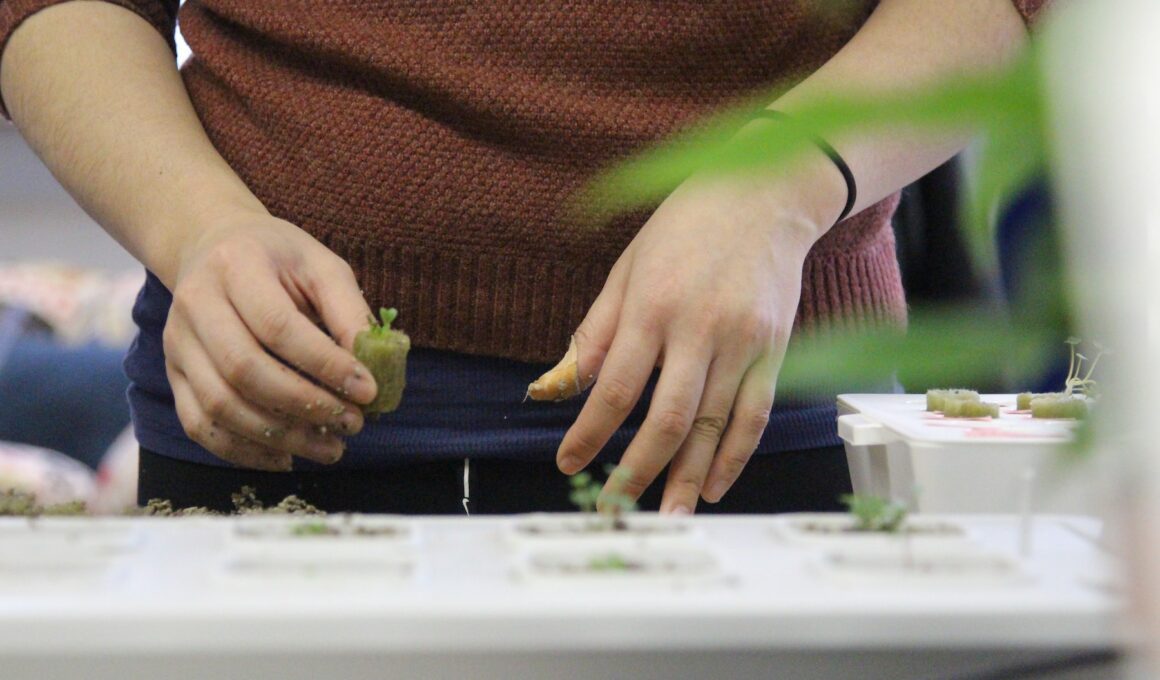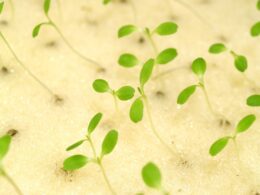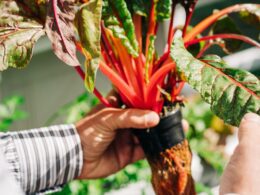Are you interested in hydroponic farming but unsure which crop will bring the most profit? Hydroponics is a method of growing plants without soil, using nutrient-rich water instead. It is gaining popularity due to its efficiency and ability to produce high-quality crops in a controlled environment.
In this article, we will explore the most profitable hydroponic crops and the factors that affect their profitability. You will learn about the best crops for maximizing your profit and tips for successful hydroponic farming. With this information, you can make an informed decision about which crop to grow and start your journey towards profitable hydroponic farming.
Understanding Hydroponics and Its Benefits
Hydroponics offers a revolutionary way to cultivate plants without soil, providing numerous benefits for both the environment and our health. Hydroponic systems are designed to provide plants with all the necessary nutrients through nutrient solutions. This method of growing crops is much more efficient than traditional soil-based farming and reduces water usage by up to 90%.
The benefits of hydroponics are vast. Firstly, hydroponic systems allow for crops to be grown all year round, regardless of weather conditions. Secondly, they are much more environmentally friendly since they require less water. Lastly, since hydroponic systems are grown in a controlled environment, they are less prone to pests and diseases, which means fewer pesticides are needed.
Nutrient solutions are an essential part of hydroponics. These solutions are designed to provide all the necessary nutrients that plants need to grow. They are made up of essential minerals, such as nitrogen, phosphorus, and potassium, which are absorbed by the plants’ roots. Since nutrient solutions are carefully measured and controlled, plants can grow faster and healthier. As a result, hydroponic crops have been found to be more nutritious than their soil-based counterparts.
Factors That Affect Crop Profitability
You’ll want to consider various factors that impact the profitability of your chosen crop in hydroponics. One of the most important factors is market demand. You’ll want to grow crops that are in high demand and can fetch a good price in the market. Conduct market research and keep an eye on trends to understand which crops are in demand and which ones will give you good returns.
Another factor that impacts crop profitability is climate conditions. Hydroponics allows you to grow crops in a controlled environment, but you still need to factor in temperature, humidity, and lighting conditions. You’ll want to choose crops that are suitable for the climate in your area and those that can grow well in the controlled environment of hydroponics.
Proper climate control will help you grow healthy crops and maximize your profits.
In summary, choosing the most profitable hydroponic crop involves understanding the market demand and climate conditions. You’ll want to grow crops that are in demand and can fetch a good price in the market. Additionally, you’ll want to factor in the climate conditions and choose crops that are suitable for the controlled environment of hydroponics.
By considering these factors, you can maximize your profits and grow a successful hydroponic crop.
The Most Profitable Hydroponic Crops
If you want to make a good return on your investment in hydroponics, it’s important to know which crops are in high demand and can fetch a good price in the market. The top-performing crops in hydroponics are those that have a high market demand and can be grown efficiently in a controlled environment.
Here are some of the most profitable hydroponic crops that you can consider growing:
-
Leafy greens: This includes lettuce, spinach, and kale, which are all popular and in high demand. They grow quickly and have a short harvest cycle, which means you can have a steady stream of income throughout the year.
-
Herbs: Basil, parsley, and cilantro are some of the most popular herbs that are used in cooking and have a high market demand. They are also relatively easy to grow and can be sold for a premium price.
-
Tomatoes: This is one of the most popular crops grown in hydroponics and has a high demand in the market. They require more attention and care than leafy greens or herbs, but the returns can be substantial.
Growing these crops in a hydroponic system allows for better control over the growing conditions, resulting in higher yields and better quality produce. By focusing on crops that have a high market demand, you can ensure that your investment in hydroponics is profitable.
Incorporating hydroponics into your farming business can be a smart move, but it’s important to do your research and choose the right crops to grow. By selecting top-performing crops that are in high demand, you can ensure a profitable return on your investment. So, consider the options and choose the crops that will work best for you and your business.
Is Growing Lettuce Hydroponically a Profitable Venture?
Growing lettuce hydroponically is a profitable venture, especially when you use the best lettuce for hydroponics. With controlled environments and nutrient-rich solutions, hydroponics allows for faster growth and higher yield. Whether it’s crisphead, butterhead, or romaine, the best lettuce varieties for hydroponics can fetch premium prices in the market, making it a lucrative business opportunity.
Tips for Maximizing Profitability
To make the most out of your hydroponic farm, it’s crucial to implement these tips for maximizing profitability and achieving success in your business.
First, consider your marketing strategies. Identify your target market and tailor your advertising to attract them. Utilize social media platforms and attend local farmers markets to gain exposure.
Second, cost optimization is key to maximizing profits. Look for ways to save money on equipment, materials, and utilities. Consider using renewable energy sources to power your farm and invest in energy-efficient lighting. Additionally, monitor your water and nutrient usage to avoid waste and unnecessary expenses.
Lastly, stay up-to-date on industry trends and innovations. Attend conferences and workshops to learn about new techniques and technologies. Implement these ideas in your farm to stay competitive and increase profitability.
By following these tips, you can ensure the success and profitability of your hydroponic farm.
Conclusion and Future Outlook for Hydroponics
Now, let’s take a look at what the future holds for hydroponics and how it will continue to revolutionize the way we think about farming.
Hydroponics is gaining traction as the new face of agriculture, and future trends suggest that this will only continue. With sustainability initiatives at the forefront of the minds of many individuals and businesses, hydroponics is poised to become a go-to method for growing food that is both eco-friendly and profitable.
As hydroponics continues to grow in popularity, we can expect to see new and innovative technologies that make it even more efficient and cost-effective. For example, some companies are exploring the use of artificial intelligence to optimize plant growth and reduce resource usage.
Additionally, vertical farming – the practice of growing crops in stacked layers – is becoming more common, allowing for greater yield in even smaller spaces.
The future of hydroponics looks bright, with sustainability initiatives and technological advancements driving the industry forward. As more people recognize the benefits of this method of farming – including the ability to grow crops year-round, regardless of weather – we can expect to see even greater adoption.
With hydroponics, the future of farming is looking greener than ever before.
Frequently Asked Questions
What are the legal requirements for growing hydroponic crops?
To legally grow hydroponic crops, you need to obtain the necessary hydroponic crop licensing, permits, and comply with regulations. This includes ensuring that your hydroponic farming practices meet legal compliance requirements.
Before starting your hydroponic farm, you should research the specific requirements and regulations in your area to avoid any legal issues. Being legally compliant not only ensures that you can continue to grow hydroponic crops, but it also helps ensure the safety of your crops and customers.
So, make sure to obtain the necessary licenses and permits, and comply with regulations to operate your hydroponic farm legally and safely.
How much space is needed to set up a hydroponic system?
If you’re looking to set up a hydroponic system, you’ll need to consider how much space you have available.
Vertical farming is a great option for those with limited space, as it allows you to stack multiple layers of plants on top of each other.
You can also explore container gardening, which involves growing plants in individual containers rather than in a traditional garden bed. This allows you to grow plants in a smaller area and can be particularly useful if you’re looking to grow a variety of different crops.
With these options, you can set up a hydroponic system in even the smallest of spaces.
What are the maintenance requirements for hydroponic systems?
To maintain a healthy hydroponic system, it’s important to manage the pH levels of your nutrient solution. This ensures that your plants receive the right balance of nutrients they need to grow. Regularly check the pH levels of your solution and adjust as necessary to maintain the optimal range for your plants.
Nutrient solution maintenance is crucial to keeping your hydroponic system thriving. Monitor the nutrient levels of your solution and replace it regularly to prevent nutrient deficiencies or excesses. By staying on top of pH management and nutrient solution maintenance, you can ensure that your hydroponic crops will grow healthy and strong.
Are there any specific lighting requirements for hydroponic crops?
When it comes to lighting requirements for hydroponic crops, LED and HID lighting are the most commonly used. LED lights are more energy-efficient and emit less heat, while HID lights are more powerful and better suited for larger grow spaces.
It’s important to monitor the nutrient solution pH to ensure proper absorption by the plants. Maintaining a pH range of 5.5-6.5 is optimal for most hydroponic crops.
When it comes to choosing a lighting system, consider the size of your grow space and the specific needs of your crops. By managing the pH of your nutrient solution and choosing the right lighting system, you can ensure healthy and productive plants.
How do hydroponic crop yields compare to traditional agriculture?
When it comes to hydroponic vs. soil yields, there are some key differences to consider. Hydroponic farming can offer higher yields per plant, as plants receive optimal nutrients and water.
However, the cost analysis of hydroponic farming can be higher due to the equipment and resources needed to maintain the system. When comparing yields per acre, traditional agriculture can still come out ahead in terms of cost-effectiveness.
That being said, hydroponic farming can offer advantages such as year-round growing and the ability to control environmental factors. It ultimately depends on the specific crop and market demands.
Conclusion
So, there you have it – a comprehensive guide to the most profitable hydroponic crops. By understanding the factors that affect crop profitability and following the tips we’ve provided, you can increase your chances of success and maximize your profits.
Hydroponics is a rapidly growing industry with endless possibilities for innovation and growth. As technology continues to advance and more people become interested in sustainable agriculture, the future looks bright for hydroponics.
Whether you’re a seasoned farmer or just starting out, there’s never been a better time to explore the exciting world of hydroponics and all it has to offer.









